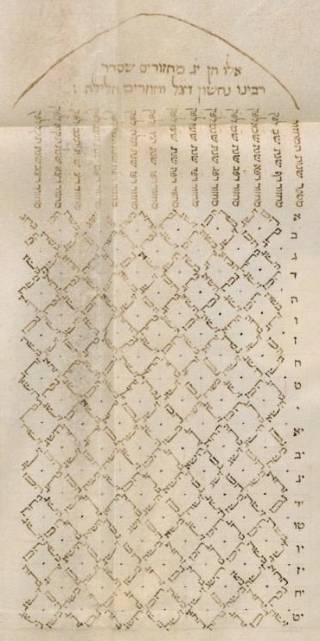The Jewish calendar and its calculation, as used today, became standard and fixed by the 9th-10th centuries. However, an alternative calendar system, known in some sources as the Iggul of Rav Nahshon Gaon (9th-century), existed alongside it until the end of the medieval period and beyond. This system assumes that the Jewish calendar fully repeats itself every 247 years, so that a calendar calculated for 247 years can be re-used indefinitely. The calendar produced by this cycle of is incompatible with the normative rabbinic calendar and could have led to holidays being celebrated at different times.

The 247-year cycle © Firenze, Biblioteca Medicea Laurenziana, Plut.I.08
Over 200 medieval and early-modern sources on the cycle from all parts of the Jewish world were discovered in the course of the project.. These sources demonstrate that the first 247-year cycles were put together in the middle of the 10th-century and the cycle’s attribution to Rav Nahshon Gaon is unhistorical.
The compiled corpus sheds light on the following questions related to the standardization of calendars in the Middle Ages:
- How were 247-year calendars produced: were they copied by scribes from master copies, or each time freshly calculated and designed? How different were they from one another? How often did they have calendar mistakes?
- Were the 247-year cycles used in practice? Did the use of these cycles lead to diversity of practice between different Jews or Jewish communities?
- Did calendar disputes occur due to the use of the 247-year cycle? Were they settled in favour of the 247-year cycle or the normative calculation?
- What were the attitudes of scholars and rabbinic leaders towards the use of the 247-year cycle and its potential for calendar diversity?
Research in this area was carried out by Nadia Vidro.
 Close
Close


